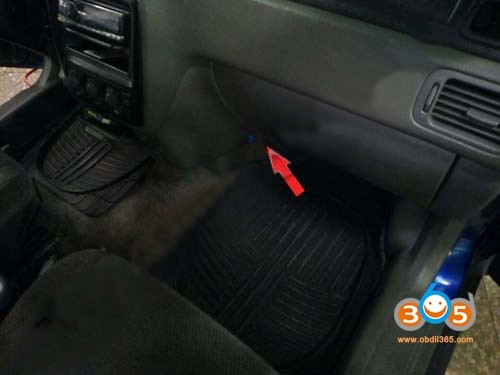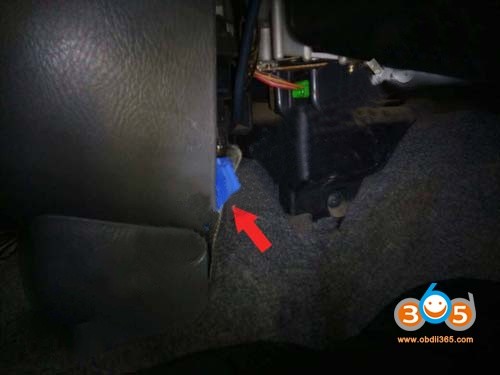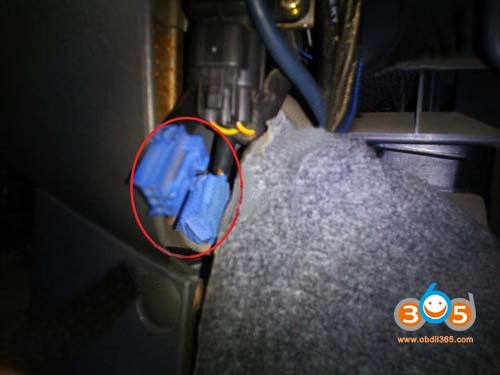The Honda CR-V, short for “Comfortable Runabout Vehicle,” has been a popular SUV since its introduction in 1996. By 2001, the CR-V was already gaining traction as a reliable and versatile vehicle. For owners and automotive technicians alike, understanding the vehicle’s diagnostic systems is crucial for maintenance and repair. One of the most important aspects of modern vehicle diagnostics is the On-Board Diagnostics system, or OBD2. This system allows for easy access to a wealth of vehicle data for troubleshooting and performance monitoring. If you own a 2001 Honda CR-V and need to access the OBD2 port, this guide will show you exactly where to find it.
Understanding OBD2 and its Importance
OBD2 is a standardized system implemented in vehicles in the late 1990s and onwards. Its primary function is to monitor the performance of the engine and emissions systems. When a problem occurs, the OBD2 system generates diagnostic trouble codes (DTCs) which can be accessed using a scan tool or code reader connected to the OBD2 port. This standardized port simplifies vehicle diagnostics, allowing mechanics and even car owners to quickly identify potential issues. For a 2001 Honda CR-V, being OBD2 compliant means you can utilize a wide range of diagnostic tools for efficient vehicle maintenance and repair.
Locating the OBD2 Port in Your 2001 Honda CR-V
Finding the OBD2 port in your 2001 Honda CR-V is straightforward. It is strategically placed for easy access, typically without needing any tools.
The OBD2 port in the 2001 Honda CR-V is located inside the cabin on the passenger side. You’ll need to look towards the center console area, specifically in the passenger footwell.
Specifically, the diagnostic connector is situated on the side of the center console, at the passenger’s feet level. You might need to look slightly upwards and inwards from the footwell to spot it.
It’s important to note that for the 1996-2001 Honda CR-V models, the connector is non-standard. As shown in the image, the blue 3-way connector is the actual diagnostic connector. Additionally, there’s a 2-way connector which is the service connector, used for basic fault reading without a dedicated scanner. When using a standard OBD2 scan tool, you will be connecting to the blue 3-way diagnostic connector.
Image Credit: Olegvsf (Thank you for your contribution)
Choosing the Right Diagnostic Tool for Your 2001 Honda CR-V
For diagnosing your 1996-2001 Honda CR-V, several diagnostic tools are available in the market. Here are some popular options that are compatible with your vehicle:
| Product | HONDA HIM HDS | Xhorse HDS cable | HONDA GNA600 | FLY100 scanner |
|---|---|---|---|---|
| Image | ||||
| Software Version | HDS 3.102.004 | HDS 2.018 | GNA 2.027 | HDS 3.016 |
| Operating System | Windows XP, Windows 7 | Windows XP | Windows XP | Windows XP, Windows 7 |
| Car Year Coverage | 1992-2018 | 1996-2012 | 1996-2012 | 1992-2011 |
| Electronic System Coverage | Full system (Dynamical, Body, Chassis, ABS, SRS, Anti-theft, etc.) | Full system (Dynamical, Body, Chassis, ABS, SRS, Anti-theft, etc.) | Full system (Dynamical, Body, Chassis, ABS, SRS, Anti-theft, etc.) | Full system (Dynamical, Body, Chassis, ABS, SRS, Anti-theft, etc.) |
| OBDII Diagnostic Function | Yes | Yes | Yes | Yes |
| Key Programming | Yes (with ALOA registration & subscription) | No | Yes (Key & immobilizer system password needed) | Yes (Key & no password for immobilizer system, smart key capable) |
| Odometer Correction | No | No | No | Yes (Without cluster removal) |
| Airbag Reset | Yes | No | Yes | Yes |
| Remote Controller Adaptation | Yes | Yes | No | Yes |




Summary of Diagnostic Tools:
- Honda HIM HDS: Offers the broadest vehicle year coverage (up to 2018) and comprehensive functionalities.
- Xhorse HDS Cable: A more budget-friendly option primarily for diagnostics.
- Honda GNA600: A robust tool with key programming capabilities.
- FLY100 Scanner: Provides key programming and odometer correction features for certain models.
All of these tools are compatible with the Honda CR-V models from 1996 to 2001. For basic OBD2 diagnostics, any of these options will work. If you require advanced functions like key programming, consider HIM HDS, GNA600, or FLY100 based on your specific needs.
In Conclusion
Locating the OBD2 port on your 2001 Honda CR-V is a simple process thanks to its accessible location in the passenger footwell. Understanding the non-standard connector type for this generation is also key for successful diagnosis. By utilizing the OBD2 system and compatible diagnostic tools, maintaining and troubleshooting your 2001 Honda CR-V becomes significantly more efficient, ensuring its continued reliability for years to come.